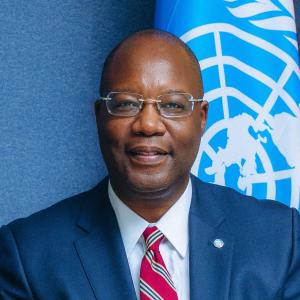Salutations:
- Mr. Patrick Okello, Commissioner for Refugees, Office of the Prime Minister;
- Ms. Eleni Zerzelidou, International Aid/Cooperation Officer Migration, EU Delegation;
- Mr. Sanusi Tejan Savage, IOM Uganda Chief of Mission, Co-Chair and Coordinator of Uganda UN Network on Migration;
- Mr. Abdi Hersi, Senior Regional Liaison and Policy Officer, IOM Regional Office for East and Horn of Africa and Southern Africa;
- Ladies and Gentlemen.
Good morning. I greet and welcome each one of you as we gather to chart a path forward in our collective journey towards safe, orderly, and regular migration in Uganda.
Allow me to start by acknowledging the great work that National Coordination Mechanism (NCM) is doing (with the support of IOM) towards developing the second National Migration Governance Indicators (MGI).
I note with satisfaction the presence of Central Government officials here today and congratulate them for this remarkable achievement.
Again, I say congratulations to the NCM Chairperson for your proactive and able leadership.
Today we are also launching the Uganda Implementation Plan for the Global Compact for Safe, Orderly, and Regular Migration (2024-2028).
It’s not just a document but a testament to and materialization of our shared and unwavering commitment to the principles and objectives embedded within the Global Compact for Migration (GCM).
This is not just a roadmap, but a robust vehicle designed to navigate the intricate pathways of migration, ensuring migration becomes a potent force for sustainable development. Congratulations to the Government of Uganda, and specifically the Permanent Secretary of OPM and the Commissioner for Refugees who is also the Chair of the NCM.
Our Chief Guest, Esteemed Guests, Dear Friends, let’s pause for a moment and reflect upon the essence of migration. Migrants are not just people in motion.
They are vibrant carriers of expertise, cultures, energies, and contributions that weave into the rich tapestry of sustainable development in every nation.
Uganda, in its unique position, stands as a regional epicentre for migration – a nexus where people migrate to, through, and from.
With a generous heart of the president and people of Uganda, it hosts over 1.8 million refugees and asylum seekers, placing it amongst the nations with the largest such populations in the region and globally.
As we are incorporating human mobility into the Uganda National Development Plan IV the 5-year government plan including the global Sustainable Development Goals (SDGs) is not just strategic but deeply commendable.
The GCM, under the overarching umbrella of the 2030 Agenda for Sustainable Development, acknowledges that well-governed migration can be a positive force, propelling development outcomes in countries of origin, transit, and destination.
It also underscores the principle of ensuring that no one is left behind, a principle that is deeply embedded in the 2030 Agenda.
In the recent SDG Summit of 2024, Member States, with a unified voice, reaffirmed their commitment to international cooperation, ensuring that migration remains safe, orderly, and regular.
While staunchly upholding the human rights and dignified treatment of all migrants, always cognizant of national circumstances.
Migration, when navigated with precision, contributes to a nation’s development through myriad channels:
- Alleviating poverty and spurring economic growth - exemplified by remittances.
- These remittances currently constitute 2.63% of Uganda’s annual GDP, well-regulated labour migration, and a vibrant, diverse labour force.
- Catalyzing investment, trade, and knowledge exchange including engaging the diaspora, welcoming returning migrants, and fostering educational opportunities through scholarships;
- Igniting the flames of innovation and diversity.
- And Enhancing security and peacebuilding, including robust efforts to combat the scourge of human trafficking.
Ladies and Gentlemen, it is within this recognition of migration as a catalyst for development, that Uganda is launching the Implementation Plan for the GCM, a pioneering initiative supported by the GCM capacity-building mechanism.
This plan represents a comprehensive approach to migration, encapsulating a wide array of GCM interventions that mirror the diverse nature of Uganda’s migration context.
I am proud of the work accomplished by IOM Uganda led by Mr. Sanusi Tejan Savage, as coordinator and secretariat for the Uganda United Nations Network on Migration, in supporting this process.
Our Chief Guest, Ladies and Gentlemen,
I extend my gratitude to IOM Chief of Mission and, as coordinator and secretariat of the UN Network on Migration, and the various UN agencies represented here, for ensuring a UN coordinated response throughout this process.
Moreover, I extend my heartfelt congratulations to you, your esteemed team, and the various Ministries, Departments, and Agencies whose perspectives and inputs have been meticulously woven into this remarkable achievement, the GCM Plan.
In closing, let me reaffirm that the United Nations stands steadfastly ready to support the Government of Uganda in translating the GCM Plan into tangible action on the ground, enhancing the well-being of migrants, and empowering host communities to flourish.
Thank you.






